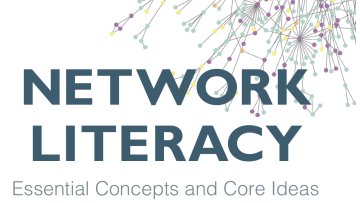Clinically-driven computational cardiac modelling of arrhythmias & electrotherapy: the good, the bad and the basic
Abstract
Sudden cardiac arrhythmic death remains a major health challenge in Western Society. Recent advances in computational methods and technologies have made clinically-based cardiac modelling a reality. An important current focus is the use of modelling to understand the nature of arrhythmias in the setting of different forms of structural heart disease. However, many challenges remain regarding the best use of these models to inform clinical decision making and guide therapies. In this talk, I will introduce a diverse sample of applications of modelling in this context, ranging from basic science studies which aim to leverage a fundamental mechanistic understanding of different aspects of pathological cardiac function, to direct clinical-application projects which aim to use modelling to immediately inform a clinical therapy. I will also discuss the challenges involved in clinically-driven modelling, and how to both engage, and manage, the expectations of clinicians at the same time, particularly with respect to the potential uses of 'patient-specific' modelling.
Towards consistent and effective modeling in the stochastic reaction-diffusion framework
Abstract
I this talk I will try to give an overview of recent progress in
spatial stochastic modeling within the reaction-diffusion
framework. While much of the initial motivation for this work came
from problems in cell biology, I will also highlight some examples
from epidemics and neuroscience.
As a motivating introduction, some newly discovered properties of
optimal controls in stochastic enzymatic reaction networks will be
presented. I will next detail how diffusive and subdiffusive reactive
processes in realistic geometries at the cellular scale may be modeled
mesoscopically. Along the way, some different means by which these
models may be analyzed with respect to consistency and convergence
will also be discussed. These analytical techniques hint at how
effective (i.e. parallel) numerical implementations can be
designed. Large-scale simulations will serve as illustrations.
A measurement technology that provides new opportunities for modelling respiratory gas exchange
An algorithm for optimizing nonconvex quadratic functions subject to simple bound constraints
Abstract
I present a new method for optimizing quadratic functions subject to simple bound constraints. If the problem happens to be strictly convex, the algorithm reduces to a highly efficient method by Dostal and Schoberl. Our algorithm, however, is also able to efficiently solve nonconcex problems. During this talk I will present the algorithm, a sketch of the convergence theory, and numerical results for convex and nonconvex problems.
Alternating direction methods for structured nonconvex optimization with applications in risk parity portfolio selection
Abstract
We will begin by discussing the risk parity portfolio selection problem, which aims to find portfolios for which the contributions of risk from all assets are equally weighted. The risk parity may be satisfied over either individual assets or groups of assets. We show how convex optimization techniques can find a risk parity solution in the nonnegative orthant, however, in general cases the number of such solutions can be anywhere between zero and exponential in the dimension. We then propose a nonconvex least-squares formulation which allows us to consider and possibly solve the general case.
Motivated by this problem we present several alternating direction schemes for specially structured nonlinear nonconvex problems. The problem structure allows convenient 2-block variable splitting. Our methods rely on solving convex subproblems at each iteration and converge to a local stationary point. Specifically, discuss approach alternating directions method of multipliers and the alternating linearization method and we provide convergence rate results for both classes of methods. Moreover, global optimization techniques from polynomial optimization literature are applied to complement our local methods and to provide lower bounds.
Newton-type methods for Support Vector Machines and Signal Reconstruction Problems
Abstract
Asymptotic Rigidity of Self-shrinkers of Mean Curvature Flow
Abstract
In this talk, we use Carleman type techniques to address uniqueness of self-shrinkers of mean curvature flow with given asymptotic behaviors.


